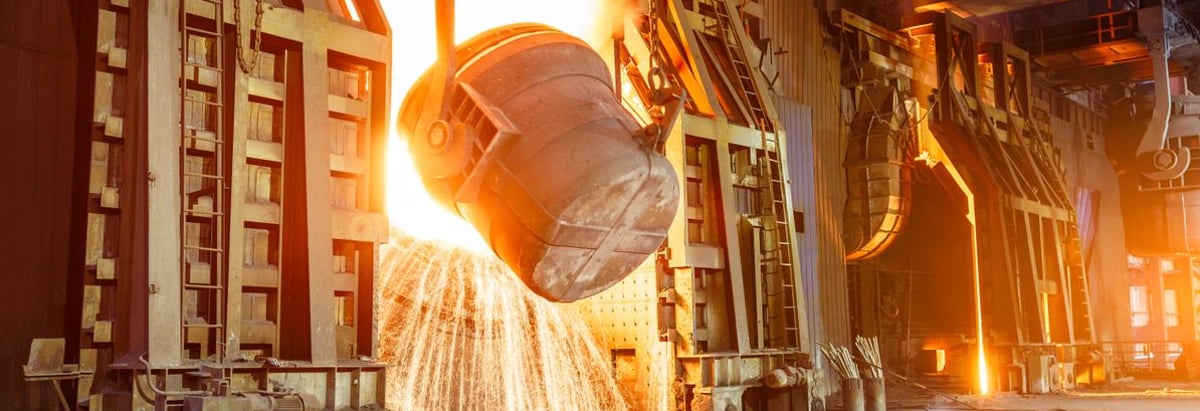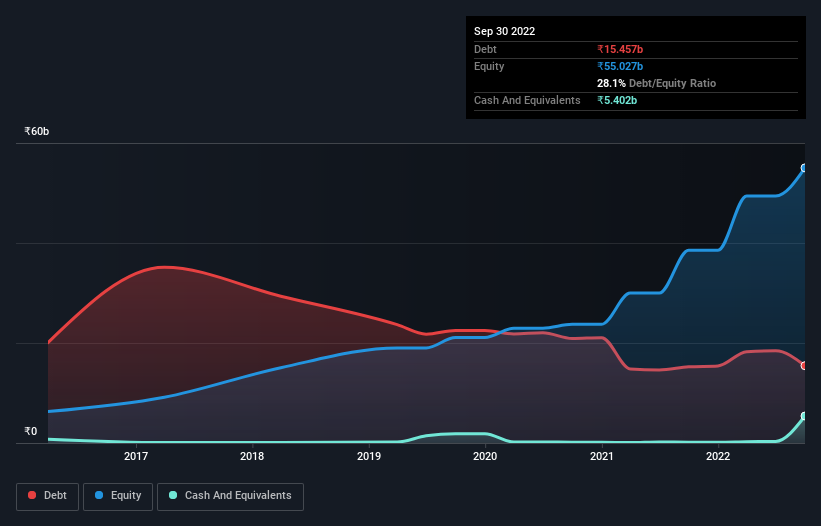- India
- /
- Metals and Mining
- /
- NSEI:JSLHISAR
Here's Why Jindal Stainless (Hisar) (NSE:JSLHISAR) Can Manage Its Debt Responsibly

David Iben put it well when he said, 'Volatility is not a risk we care about. What we care about is avoiding the permanent loss of capital.' It's only natural to consider a company's balance sheet when you examine how risky it is, since debt is often involved when a business collapses. We can see that Jindal Stainless (Hisar) Limited (NSE:JSLHISAR) does use debt in its business. But the more important question is: how much risk is that debt creating?
What Risk Does Debt Bring?
Generally speaking, debt only becomes a real problem when a company can't easily pay it off, either by raising capital or with its own cash flow. If things get really bad, the lenders can take control of the business. While that is not too common, we often do see indebted companies permanently diluting shareholders because lenders force them to raise capital at a distressed price. Of course, plenty of companies use debt to fund growth, without any negative consequences. The first step when considering a company's debt levels is to consider its cash and debt together.
Check out the opportunities and risks within the IN Metals and Mining industry.
What Is Jindal Stainless (Hisar)'s Debt?
As you can see below, Jindal Stainless (Hisar) had ₹15.5b of debt, at September 2022, which is about the same as the year before. You can click the chart for greater detail. On the flip side, it has ₹5.40b in cash leading to net debt of about ₹10.1b.

A Look At Jindal Stainless (Hisar)'s Liabilities
We can see from the most recent balance sheet that Jindal Stainless (Hisar) had liabilities of ₹35.7b falling due within a year, and liabilities of ₹11.9b due beyond that. On the other hand, it had cash of ₹5.40b and ₹27.6b worth of receivables due within a year. So its liabilities outweigh the sum of its cash and (near-term) receivables by ₹14.7b.
Since publicly traded Jindal Stainless (Hisar) shares are worth a total of ₹85.0b, it seems unlikely that this level of liabilities would be a major threat. Having said that, it's clear that we should continue to monitor its balance sheet, lest it change for the worse.
We measure a company's debt load relative to its earnings power by looking at its net debt divided by its earnings before interest, tax, depreciation, and amortization (EBITDA) and by calculating how easily its earnings before interest and tax (EBIT) cover its interest expense (interest cover). This way, we consider both the absolute quantum of the debt, as well as the interest rates paid on it.
Jindal Stainless (Hisar) has a low net debt to EBITDA ratio of only 0.57. And its EBIT easily covers its interest expense, being 127 times the size. So you could argue it is no more threatened by its debt than an elephant is by a mouse. Fortunately, Jindal Stainless (Hisar) grew its EBIT by 2.6% in the last year, making that debt load look even more manageable. The balance sheet is clearly the area to focus on when you are analysing debt. But it is future earnings, more than anything, that will determine Jindal Stainless (Hisar)'s ability to maintain a healthy balance sheet going forward. So if you're focused on the future you can check out this free report showing analyst profit forecasts.
Finally, a business needs free cash flow to pay off debt; accounting profits just don't cut it. So we always check how much of that EBIT is translated into free cash flow. Over the most recent three years, Jindal Stainless (Hisar) recorded free cash flow worth 61% of its EBIT, which is around normal, given free cash flow excludes interest and tax. This free cash flow puts the company in a good position to pay down debt, when appropriate.
Our View
The good news is that Jindal Stainless (Hisar)'s demonstrated ability to cover its interest expense with its EBIT delights us like a fluffy puppy does a toddler. And the good news does not stop there, as its net debt to EBITDA also supports that impression! Taking all this data into account, it seems to us that Jindal Stainless (Hisar) takes a pretty sensible approach to debt. While that brings some risk, it can also enhance returns for shareholders. The balance sheet is clearly the area to focus on when you are analysing debt. However, not all investment risk resides within the balance sheet - far from it. To that end, you should be aware of the 1 warning sign we've spotted with Jindal Stainless (Hisar) .
At the end of the day, it's often better to focus on companies that are free from net debt. You can access our special list of such companies (all with a track record of profit growth). It's free.
New: Manage All Your Stock Portfolios in One Place
We've created the ultimate portfolio companion for stock investors, and it's free.
• Connect an unlimited number of Portfolios and see your total in one currency
• Be alerted to new Warning Signs or Risks via email or mobile
• Track the Fair Value of your stocks
Have feedback on this article? Concerned about the content? Get in touch with us directly. Alternatively, email editorial-team (at) simplywallst.com.
This article by Simply Wall St is general in nature. We provide commentary based on historical data and analyst forecasts only using an unbiased methodology and our articles are not intended to be financial advice. It does not constitute a recommendation to buy or sell any stock, and does not take account of your objectives, or your financial situation. We aim to bring you long-term focused analysis driven by fundamental data. Note that our analysis may not factor in the latest price-sensitive company announcements or qualitative material. Simply Wall St has no position in any stocks mentioned.
About NSEI:JSLHISAR
Jindal Stainless (Hisar)
Jindal Stainless (Hisar) Limited manufactures and sells stainless steel products worldwide.
Flawless balance sheet and fair value.


